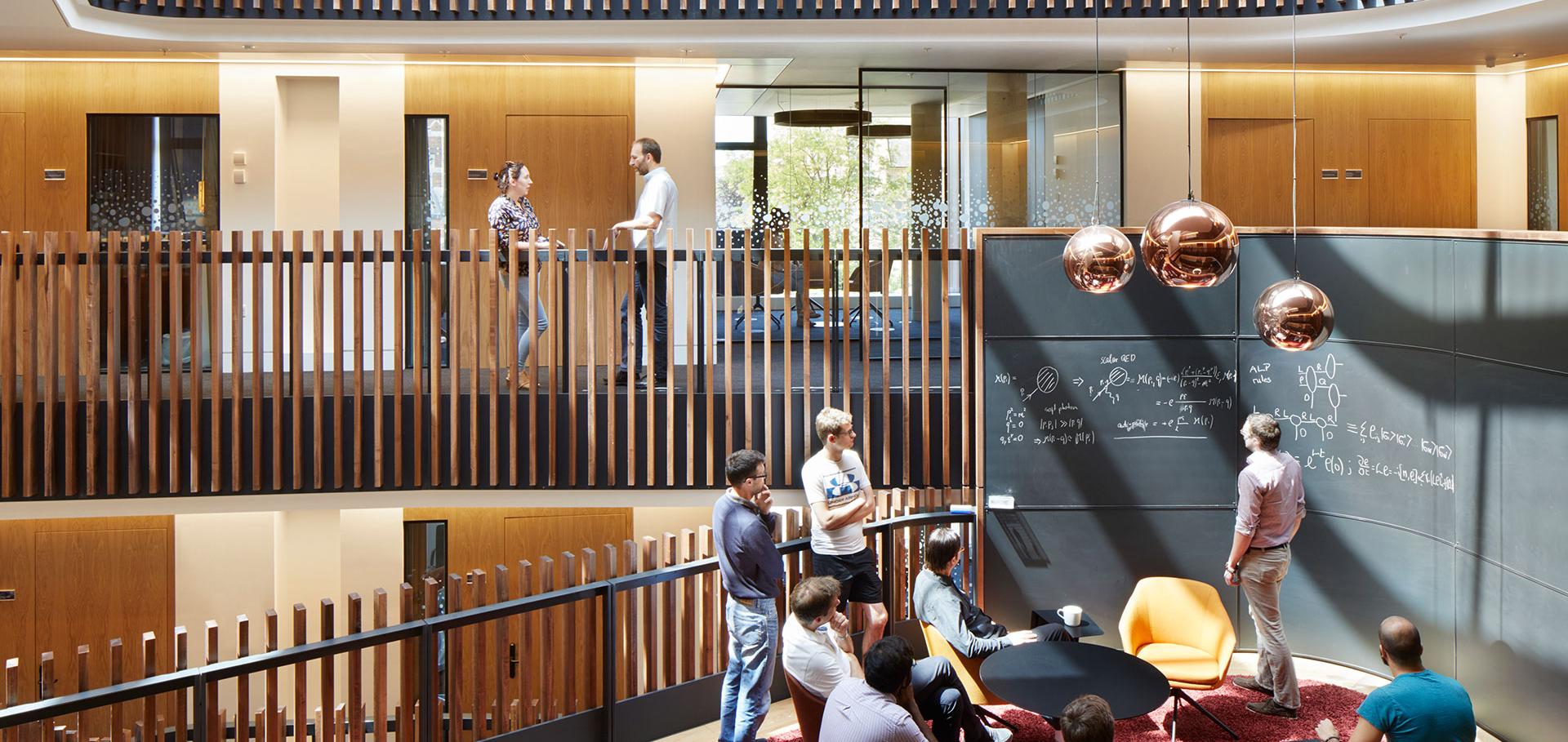Axion couplings in heterotic string theory
Journal of High Energy Physics Springer 2025:2 (2025) 188
Abstract:
We study the coupling of axions to gauge bosons in heterotic string theory. The axion-gauge boson couplings in the low energy 4d theory are derived by matching mixed anomalies between higher-form global symmetries and the zero-form gauge symmetry in the 10d theory. When the standard model gauge group is embedded in a single simple group in the 10d theory — as is the case for almost all heterotic models studied in the literature — the ratio of the axion-photon coupling to the axion mass is bounded above by the QCD line. This bound is relevant for a large number of axion searches which have sensitivity to axion parameter space above this line. The discovery of an axion in these searches will rule out a large class of heterotic models, making such a signal challenging to explain within heterotic string theory.Axion Couplings in Heterotic String Theory
(2024)
Searching for axion forces with spin precession in atoms and molecules
Journal of High Energy Physics Springer 2024:7 (2024) 133
Abstract:
We propose to use atoms and molecules as quantum sensors of axion-mediated monopole-dipole forces. We show that electron spin precession experiments using atomic and molecular beams are well-suited for axion searches thanks to the presence of co-magnetometer states and single-shot temporal resolution. Experimental strategies to detect axion gradients from localised sources and the earth are presented, taking ACME III as a prototype example. Other possibilities including atomic beams, and laser-cooled atoms and molecules are discussed.Electroweak phase transition with a double well done doubly well
Journal of High Energy Physics Springer 2024:6 (2024) 89
Abstract:
We revisit the electroweak phase transition in the scalar singlet extension of the standard model with a ℤ2 symmetry. In significant parts of the parameter space the phase transition occurs in two steps — including canonical benchmarks used in experimental projections for gravitational waves. Domain walls produced in the first step of the transition seed the final step to the electroweak vacuum, an effect which is typically neglected but leads to an exponentially enhanced tunnelling rate. We improve previous results obtained for the seeded transition, which made use of the thin-wall or high temperature approximations, by using the mountain pass algorithm that was recently proposed as a useful tool for seeded processes. We then determine the predictions of the seeded transition for the latent heat, bubble size and characteristic time scale of the transition. Differences compared to homogeneous transitions are most pronounced when there are relatively few domain walls per hubble patch, potentially leading to an enhanced gravitational wave signal. We also provide a derivation of the percolation criteria for a generic seeded transition, which applies to the domain wall seeds we consider as well as to strings and monopoles.The monodromic axion-photon coupling
Journal of High Energy Physics Springer 2024:1 (2024) 169


